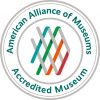(DOVER, Del. — March 23, 2021) — Archaeological research has led to the identification of a burial ground at the John Dickinson Plantation in Dover, Delaware. The burial ground was found during archaeological fieldwork on March 9, 2021 and likely holds the enslaved individuals and other African Americans who lived, worked, and died on land owned by the Dickinson family. “We remain committed to telling inclusive history. This includes restoring dignity to those who have been forgotten. This important discovery presents a powerful moment for every Delawarean,” says Delaware Secretary of State Jeff Bullock.
For two years the Department of State, Division of Historical and Cultural Affairs has undertaken archaeological investigations on the 450 acres of state property. The work has focused on identifying the burial ground for enslaved individuals that is referenced in primary source documents. “This is sacred ground for Delaware, and we will continue to treat it with the honor and respect it deserves. Our path forward is to protect the site, engage with the community about how to proceed, and continue to learn more through research and dialogue,” says Tim Slavin, Director of the Division of Historical and Cultural Affairs.
The John Dickinson Plantation is the boyhood home of John Dickinson, a Founding Father of the United States, a framer and signer of the U.S. Constitution. Dickinson wrote eloquently about freedom and liberty while at the same time holding other human beings in bondage.
At the John Dickinson Plantation, a state museum operated by the Division of Historical and Cultural Affairs, the goal is to educate the public about the past utilizing the historic, cultural, and natural resources associated with the site.
The Division will continue to undertake additional research to learn more about this burial ground and those interred here and to engage with descendent communities in making important decisions regarding the expansion of the interpretive footprint of this land.
There is no access to this location.
The Division of Historical and Cultural Affairs is an agency of the State of Delaware. The division enhances Delaware’s quality of life by preserving the state’s unique historical heritage, fostering community stability and economic vitality and providing educational programs and assistance to the general public on Delaware history. The division’s diverse array of services includes operation of five museums, administration of the State Historic Preservation Office, conservation of the state’s archaeological and historic-objects collections, operation of a conference center and management of historic properties across the state. Primary funding for division programs and services is provided by annual appropriations from the Delaware General Assembly and grants from the National Park Service, Department of the Interior, a federal agency. However, the contents and opinions expressed in the division’s programs and services do not necessarily reflect the views and policies of the Department of the Interior.
For additional information please contact:
Gloria Henry, Site Manager, John Dickinson Plantation, Division of Historical and Cultural Affairs
302-739-3277 and gloria.henry@delaware.gov
Tim Slavin, Director, Division of Historical and Cultural Affairs
302-736-7418 and timothy.slavin@delaware.gov
-END-
